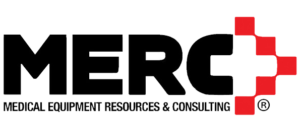CAPITAL STRATEGY INSIGHTS: Reimagining the Process #016

June 6, 2023: 79th Anniversary of D-Day. May we never forget.
#016 Rationally Redeploying Assets
The last post examined Estimated Standard Full Life (ESFL), the expected full life of an asset, addressing how long devices actually meet the standard of care, stay reliable, and maintain market value. In this post, we will address redeploying assets by using ESFL and Estimated Remaining Useful Life (ERUL) metrics. As I am just coming from a project that included the redeployment of hundreds of assets, this is all very top of mind.
As a starting point, my firm uses the label of ESFL for metrics we have developed. Others use terms like Standard Full Life or Estimated Useful Life. Whatever your organization uses, this establishes the duration of expected life of the asset once it is purchased new and commissioned for patient care. It answers the question “how long should the asset be in use?” We use months as a unit of measure and not years so that we don’t get into tenths of a year as we are assigning ERUL.
Once you know how long it should live, it is time for ERUL. As we discussed in previous posts, this goes back to three criteria:
- Age and reliability; and
- Standard of care; and
- Market value
Arriving at an ERUL for the subject asset allows you to use a metric as another evaluation point for viability of relocation.
Another consideration is the cost of redeployment. This is real and frequently is not evaluated closely. I don’t care if you are looking at something low cost and highly mobile like an IV pole, there are costs to consider when relocating that unit. The more difficult the asset is to relocate, the more expensive it is to relocate. At what point does the remaining life and cost to relocate justify relocation or replacement?
This brings up the duration of the project and using ERUL to determine if the asset will be appropriate to relocate to the new space. Many times I’ve seen plans to relocate assets that will be past their useful life metrics when the project is completed. This was done for the sake of saving money, but did anyone truly measure the cost of relocating old equipment knowing that within a short period of time the units would all need to be replaced?
Project budget is still another consideration. Ironically, owners spend so much money on renovating, expanding, or building new space to house the diagnostic and therapeutic assets, and then choose to redeploy old assets that should have been replaced as part of the building project. I realize you can’t just replace everything (although I’ve seen it done at a small scale), but using the metrics of ESFL, ERUL, and relocation costs one can make informed and appropriate decisions regarding the redeployment or replacement and integrate those decisions into the project budget.
I realize this isn’t very glitzy stuff, but where this approach is used, owners didn’t pay to move assets that were on their last legs. Did the owner/provider staff make the final decisions? Absolutely, but they relied on the ERUL metrics and costs considerations when making those decisions. This effort right sized the redeployments, paying for only what they needed to redeploy, and minimized the costs associated with “why did we even bother to move this thing?”
Looking forward to posting again in a month or so. Until then, be well and as always, feel free to comment at info@medicalequipmentconsultants.com.


